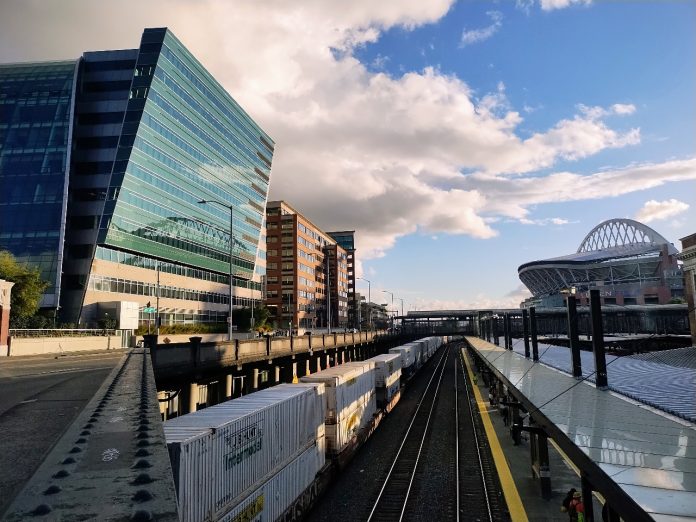
Transit riders and Chinatown-International District (CID) residents advocating for a light rail station underneath 4th Avenue S were dealt a major blow Thursday with analysis presented to the Sound Transit board’s system expansion committee. Agency staff and expert consultants portrayed any path forward on 4th Avenue as incredibly challenging and costly. They pointed to conflicts with BNSF Railroad as a huge risk factor and one that cannot be mitigated due to federal law heavily stacked to favor railroad companies.
“I’ve concluded that the railroad-related risks here are huge and they cannot be managed and mitigated without excessive cost and schedule attacks,” David Peters, a consultant hired by the board specifically to investigate the 4th Avenue option, said Thursday. “In essence, I believe that this alternative is not reasonably constructible.”
The 4th Avenue option would allow quick transfers between Sound Transit’s two planned lines through Downtown Seattle, reducing travel times for riders and creating a high quality transit hub where regional transit options converge, including Sounder and Amtrak next door.
But logistical challenges unique to 4th Avenue are likely to push the Sound Transit board to double down on its preferred option, which would skip the transit hub and instead build stations in Pioneer Square and South CID. That decision would also jettison a station planned near Madison Street close to First Hill, making it the second Sound Transit measure to renege on promises to the First Hill community.
Barring unproven construction methods, building a station underneath the existing 4th Avenue viaduct would require wholesale closure and replacement of the elevated city thoroughfare. That adds costs and time on its own, but both Sound Transit staff and Peters’ report broke down how onerous it would be to work directly alongside the active and heavily used BNSF tracks. Construction schedules would be controlled by BNSF, which could halt work at any time, and an entire year of construction would be taken up with the task of adding a massive wall separating the construction site from trains.
Based on these challenges, what is projected to be six to seven years of construction for a South CID station would be 10 to 12 years at 4th Avenue.
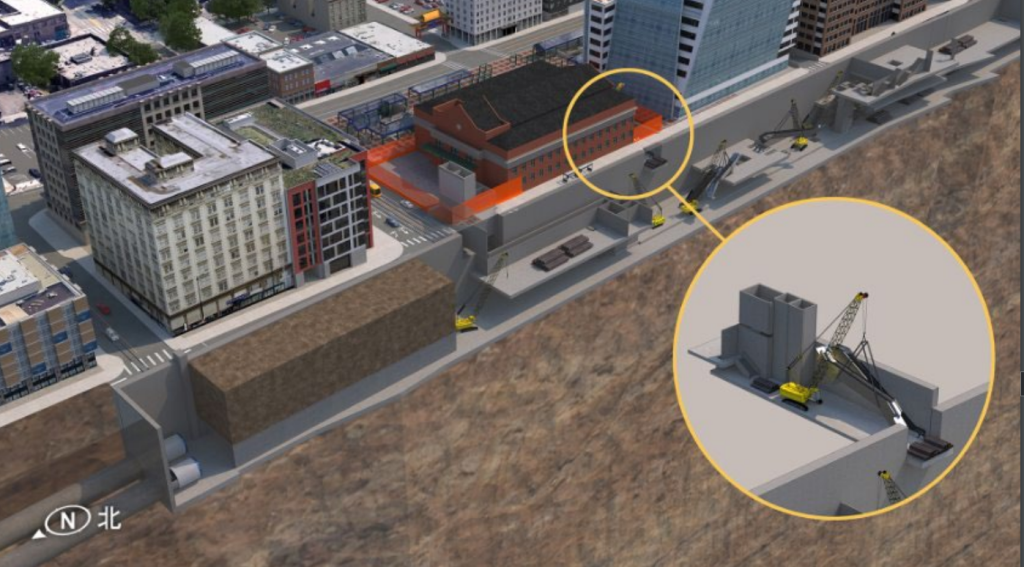
An option to build a station south of S Jackson Street between 5th and 6th Avenues (the “Fifth Avenue Shallow Diagonal” option) remains on the table, but that choosing that path would entail the highest impacts to the CID neighborhood’s densest blocks, as well as additional costs that would come from changing tracks after the Sound Transit board selected a preferred alternative in 2023. But the construction timeline for a 5th Avenue station is the shortest of the alternative, at just five to six years, and doesn’t entail any major street closures.
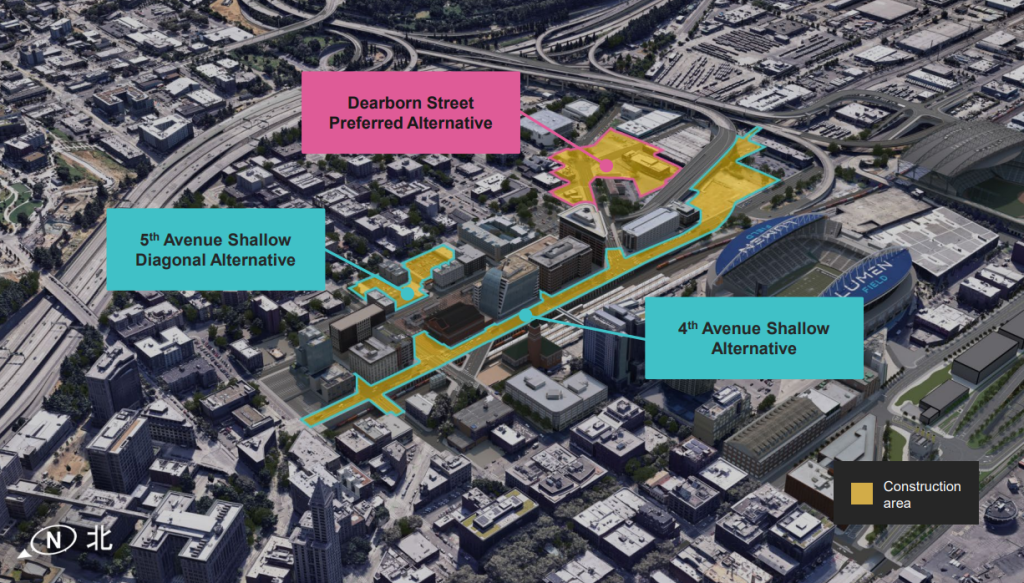
Though construction impacts are likely to remain at the top of the list of the board’s considerations, the committee also received ammunition in favor of its preferred option in other areas. From a ridership perspective, the data seemed to show very little difference between the options on the table, with only a 1.3% increase in overall boardings throughout Downtown Seattle with the 4th Avenue option. But that high level view may be overly optimistic, expecting riders to simply transfer at another station rather than choose another mode entirely.
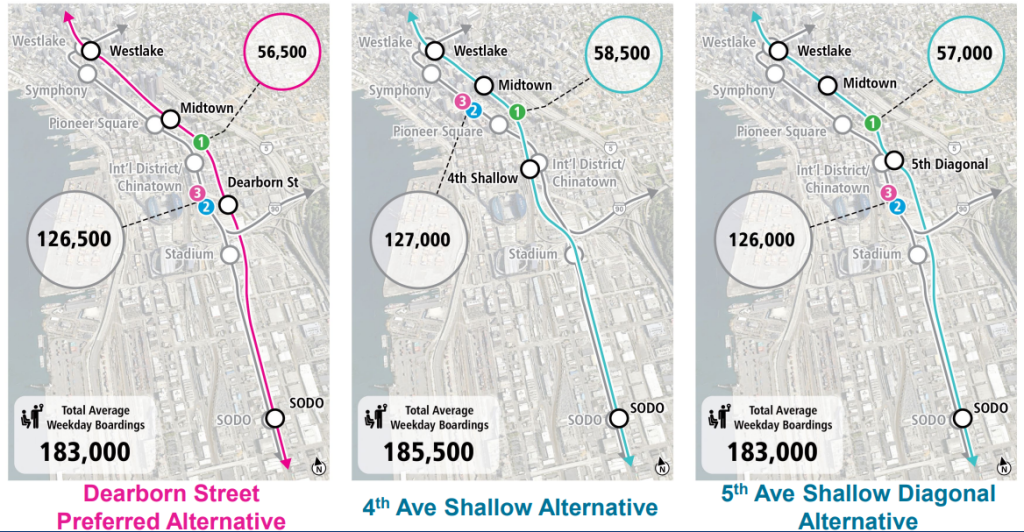
The projections do show that only 3,000 daily riders are expected to use a South CID station, compared to 9,500 at 4th Avenue. That would make the station one of the most lightly used on the Ballard line, unsurprising given its proposed location close to highway ramps and away from most of the neighborhood’s destinations. Bizarrely, the modelling also suggested that over a third of potential 4th Avenue riders would drop off if a CID station were simply one block away at 5th Avenue, with only 6,000 daily riders projected to board there.
Sound Transit planners did note that the agency’s modeling is incredibly sensitive to small changes in station placement in Downtown Seattle, given the number of other alternative transit options, but the numbers are eyebrow-raising.
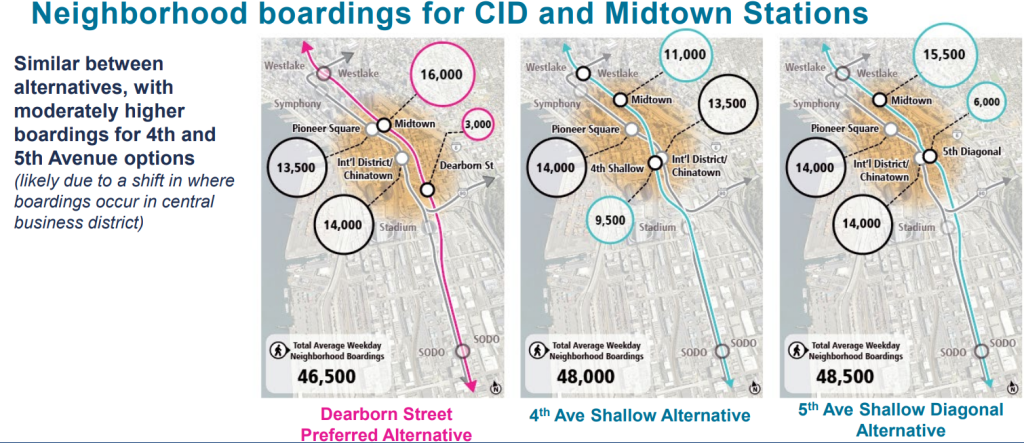
The projected walk times between destinations as presented seemed to minimize the differences between options, but ultimately did show the full impact of deleting a true Midtown station within close proximity to First Hill: an eight-minute walk from Virginia Mason Hospital becomes 13 minutes. And they do illustrate the time penalty added for riders transferring to Sounder, with travel times tripling from two to six minutes.
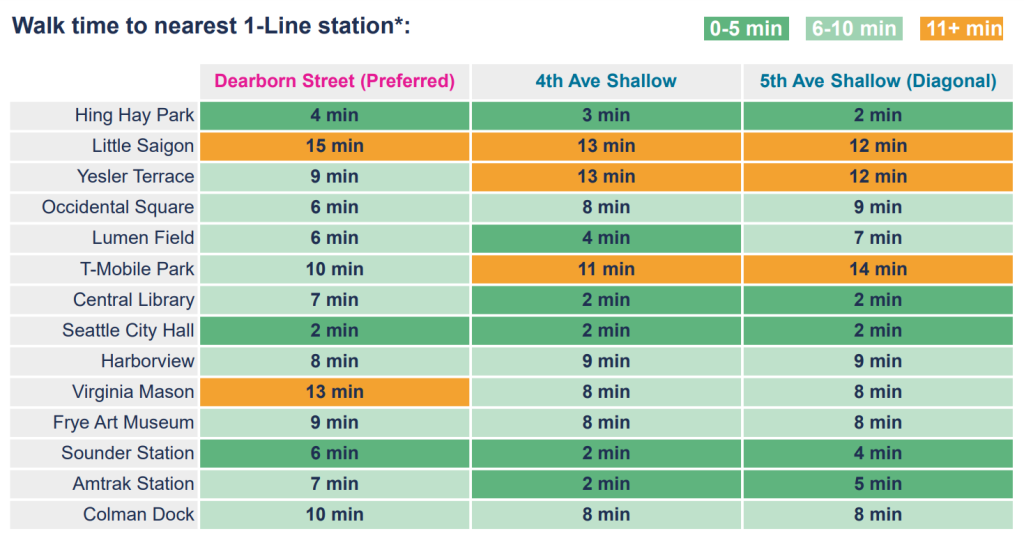
The Eastside would also have significantly longer trip times to the southern half of Sound Transit network and vice versa, without the high quality transfers a hub in the CID. Sound Transit has projected that the transit hubs in the Pioneer Square and at Westlake Station, will pick up the slack and carry similar total ridership. However, the transfer environment at either station will not be as convenient, and it will involve more backtracking for riders going from East Link to the south, or vice versa.
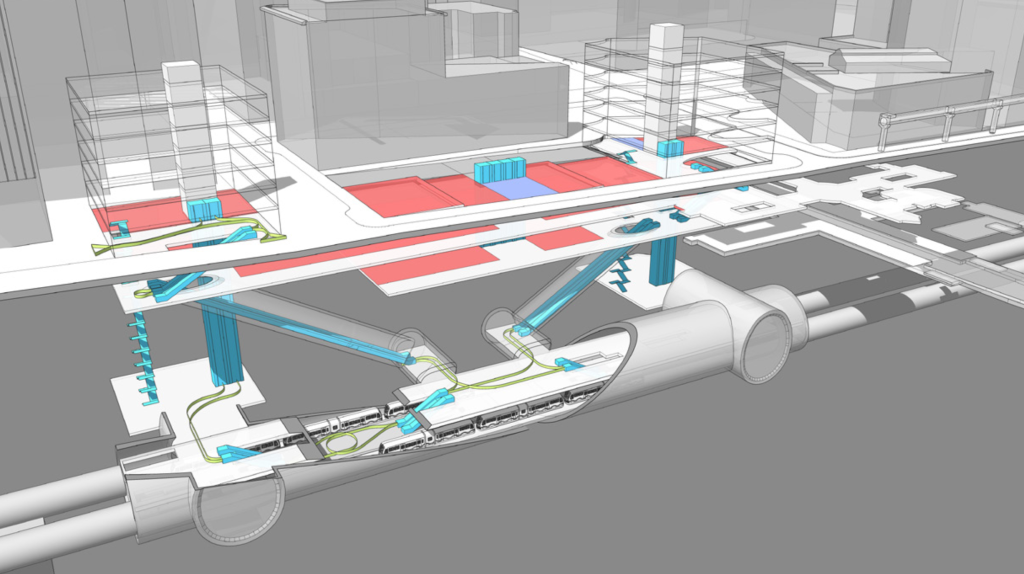
King County Councilmember Claudia Balducci, who wrote a letter to Sound Transit in 2023 co-signed with Washington State Department of Transportation (WSDOT) Secretary Roger Millar pushing for an outside expert review of these alternatives, said her goal is still to see a station built close to the existing one.
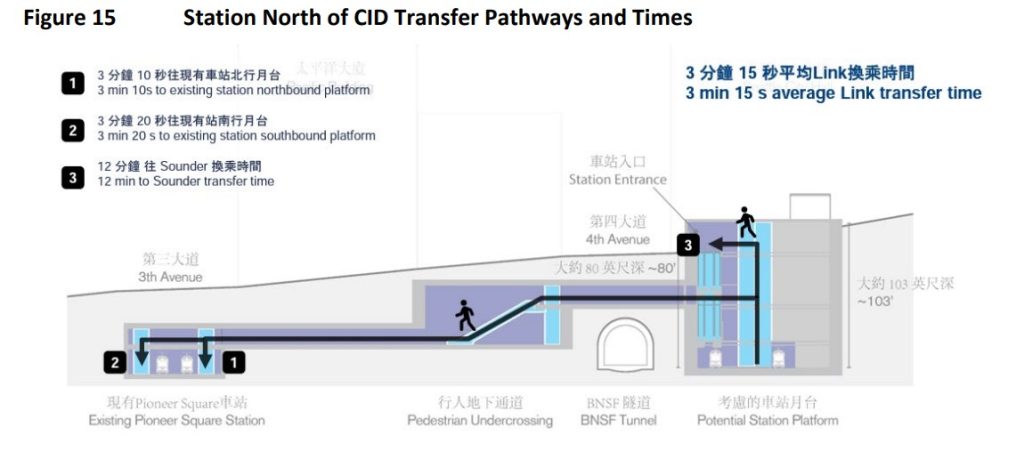
“If we at all can do it, we should build a hub here in the CID,” Balducci said. “We should build a hub here where our three lines come together because it is our only opportunity to put that into this regional system, and that would convey benefits to all the riders throughout the region to have that hub, in addition, it’s beneficial for the neighborhood right here for people to access the system, so that is my goal. My goal as we go forward, with all of this information, is to know that we have turned over all the rocks and when we make a decision we can feel good that we know what we can and cannot do.”
Seattle Mayor Bruce Harrell, who originally proposed the South CID option along with King County Executive Dow Constantine, kept his comments relatively brief. He noted an objective of trying to make up the difference in ridership that would come from placing a station further away from the existing hub.
“We are hearing almost religiously from community members that have a lot of concern about the preferred alternative at this point, and that goes to the heart of everyone in the room that’s trying to do right by a gem of our city, which is our Chinatown-International District,” Harrell said.
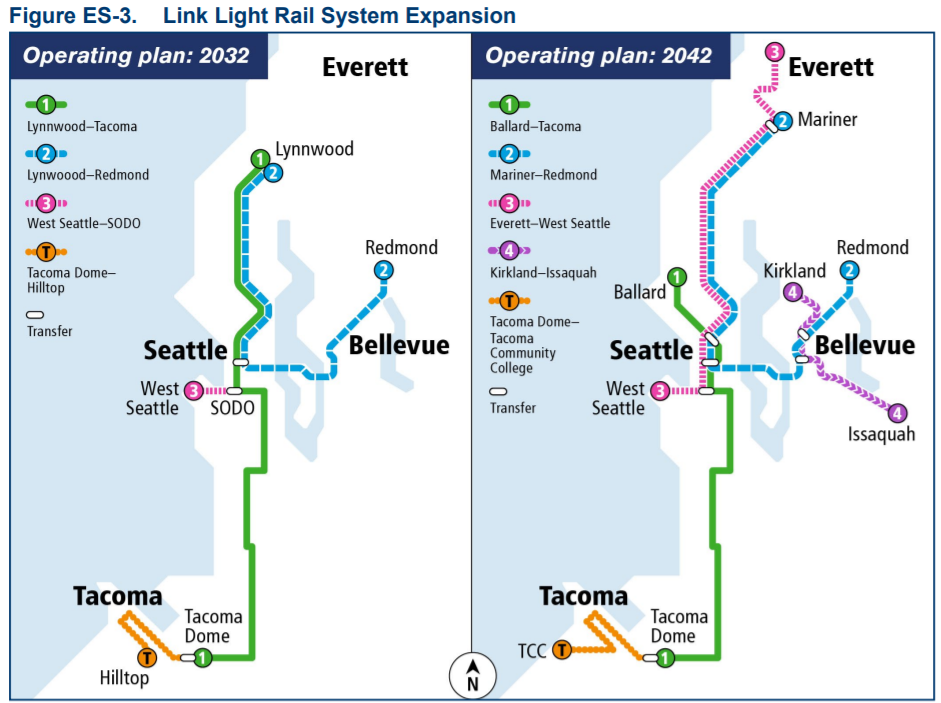
With the issue of costs mostly unaddressed in Thursday’s meeting, the entire question is set to come up again in 2025, as the board reaffirms its original alignment choice and the overall Ballard Link Extension Project heads toward a Final Environmental Impact Statement (FEIS) in 2026. With estimated costs up approximately 75% on the first major Sound Transit 3 project to advance into final design, the West Seattle Link Extension, any cost impacts on Ballard Link — currently pegged at $11.2 billion — will have a major impact on the ability for Sound Transit to deliver the entire program.
After the bad news for a transit hub at 4th Avenue this week, the debate may shift in the coming months to whether 5th Avenue deserves a second look.
Ryan Packer has been writing for The Urbanist since 2015, and currently reports full-time as Contributing Editor. Their beats are transportation, land use, public space, traffic safety, and obscure community meetings. Packer has also reported for other regional outlets including Capitol Hill Seattle, BikePortland, Seattle Met, and PubliCola. They live in the Capitol Hill neighborhood of Seattle.


